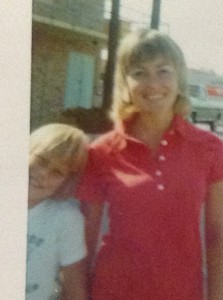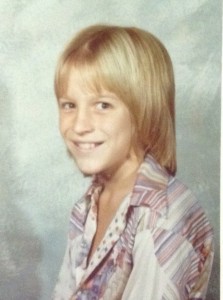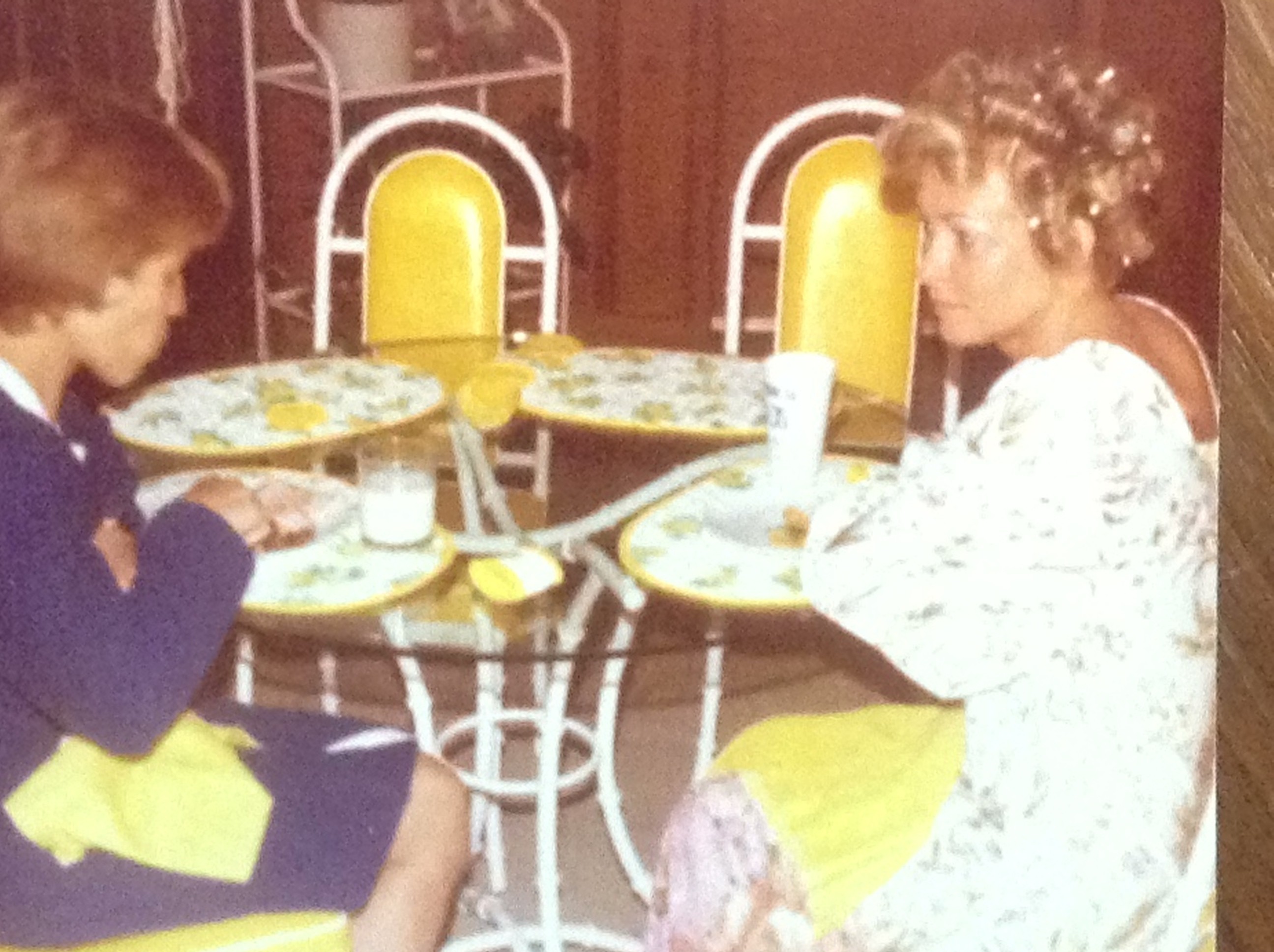For Mothers Who Educate Imaginations

Note: I’m taking a decidedly personal detour today in honor of mothers nurturing imaginations everywhere.
My mother made the most of her means and time to give my imagination and spirit an education beyond school. A smile and an easy laugh forever cast to the world, she would never let on to her tow-headed boy the troubles she had with my father or how most of the money he earned from his charm and wit as a top-selling advertising radio rep in Dallas went to entertaining. At least not until years later when I probed.
She worked a few half days and full days as my grandfather’s secretary at his Tandy Quick Print Shop. During the summer, I’d often go with her. My grandfather, a gentle, reserved, and retired Air Force Lieutenant, would give me a spot at a table with a stack of drawing pads and pencils. For hours, I drew elaborate illustrated stories about spies, or I’d sneak a few pages of whatever book my mother was reading – Helter Skelter, Jaws.

Somehow she raised me on her own terms and not according to the dictates of West Side Fort Worth. By the time I was five, she let me grow my blond hair long to my shoulders and wear the red and yellow paisley pants I had chosen for the class picture. My friends’ mothers would call her, I would find out years later, and ask her if she would please cut my hair short because now Patrick or Joe or Kenneth also wanted his hair to be long like Jeffrey’s.
My mother’s reply: “So, let him grow his hair long.”
And she picked up on my quiet ways.
* * *
The real education came on Mondays off. My mother had Mondays off, a day she’d often spend with me. Each Monday during a string of summers, she gave me my choice of outings in Fort Worth. The Kimball Art Museum – the marvel of a museum designed by Louis Kahn. The Modern Art Museum of Fort Worth. The Amon Carter Museum of Western Art. The Japanese Gardens. The Botanical Gardens. The Fort Worth Zoo. The Museum of Natural Science and History. The library. The Will Rogers Coliseum flea market where I could spend my allowance on Hardy Boys books.
I favored the Japanese Gardens. I learned to love carved paths aimed to put you in intentional relation to water and sand, fish and flowers. She would let me roam and find my favorite spot before the sand meditation garden. And for a few minutes, I could taste what it felt like to sit with one’s self, alone, before a garden designed just for that.
At the Modern, we’d stand before, say, a canvas of flies painted in red up close. And then the blue flies. And the yellow flies. We’d try to meet each painting or sculpture on its own terms but at the time we usually couldn’t help but smirk. But we’d always return to see what was next.
Among museums, the Kimball stood out as my favorite outing. At the time, the permanent collection favored mostly Baroque canvases with a few 19th-century Romantic landscapes.
By the time I was ten, I knew intimately many of the Kimball’s permanent paintings. I knew the natural landscapes where I wanted to live. I had seen Picasso’s notebook sketches at a special exhibit – even though we had to leave early because my friend Sam and I couldn’t stop giggling at the sketches of all the naked women. And I knew who Louis Kahn was. And I had my own favorite – its one Picasso, l’Homme Avec Une Pipe.
The two of us, side-by-side, would stand before the Cubist canvas or any other canvas for several minutes.
“What do you see?” my mother would ask in her honeyed voice.
“A man. And there’s the pipe. It looks like pieces of broken glass.”
We’d stand before an 18th-century painting of Christ.
“What do you see in the margins?”
“A lamb.”
We’d stand before an 18th-century floor-to-ceiling canvas of cherubs floating above a figure from Greek mythology.
“What do you think it means?”
“I don’t know. What do you think it means?”
We’d stand before a 19th-century Romantic landscape.
“How do you feel?”
“Peaceful. Like I want to live there.”
To my friends, I was never bookish, yet my favorite days during the school year were spent often faking being sick so I could stay home in bed with my sketchpads, pencils, notebooks, and books. And I spent my afternoons wandering the woods wherever I could find them in a growing city still wanting to feel like a small town.
* * *

When I journeyed as far away as Austin to The University of Texas, I spent many of my nights trying to study economics and other mind-numbing topics in the art library. Inevitably, I would wander from my books and find a large coffee table book called, simply, Picasso. Page after page showed the shirtless artiste in an open atelier, that wondrous look still in his eyes, that look that said, “This is the life.”
Some thirty years later, Kay Larson has asked me how I knew so much about Dadaism and Futurism and John Cage. My friend, artist Julianne Swartz, asked me just last night around a campfire what my training in art history was.

I don’t remember when or why those summers stopped. It was around the time I was 12 or 13 and likely started to outgrow my mother for a while. Around the time my mother said to my father, “Enough” and left him.
But before that happened and before I left home and left Texas, my mother would make sure I knew what was important. That art and the imagination have value even if you don’t “get” it. That solitude in the natural world has value.
I learned that if I kept tending to my imagination that I, too, could “live the life” however I created it. And I’ve come as close as I will to living in that natural landscape.
I learned how to ask the critical questions. What do you see? What do you see in the margins? How does it make you feel? What do you think it means?
And she made sure I knew that someone in the world actually cared enough to listen to my attempts to answer.
To anyone who has given someone else, especially a child, those or comparable gifts,
Happy Mother’s Day.
![]()
Thank you for this post. My 9 year old son and I have in the past frequently butted heads. We are both stubborn, and like to get our own ways. More recently I’ve tried to focus on his many amazing gifts, and as I read your post about how you were as a child—it resonated. The gift of imagination—and slowing down enough to tune into your imagination, is a powerful one that my son has taught me. I’m a single mom, frequently in a hurry and unfortunately that often means Im impatient. Just last week I really challenged myself to slow down on my morning walk to drop my son at childcare, so I could reall focus on him and tune into his observations. And something magical happened with that simple gesture. He is a true wonder tracker—but the really magical thing is he’s helped me tune into the fact that I too am interested in tracking wonder, (that’s probably why I signed up over a year ago for your website). Through this new connection, we have bonded more. I appreciate hearing the perspective of a now grown boy, as to how important that nurturing is. I’m motivated this Summer to try and create more intentional time to track wonder. You also made me aware of the precious window of time i have.
Thanks as always for inspiration on the Journey!
Laurel
Laurel~
I appreciate your taking the time to share your experiences and responses. I also empathize with your challenges of being a single mother who feels challenged in clock time. Your model this summer will be a memorable gift to your son. Let us know how it goes.
Jeffrey
I so love your mom….wonderful and loving words…
This is such an awesome story. Thanks for sharing. Your mom is an amazing woman!!
Pat